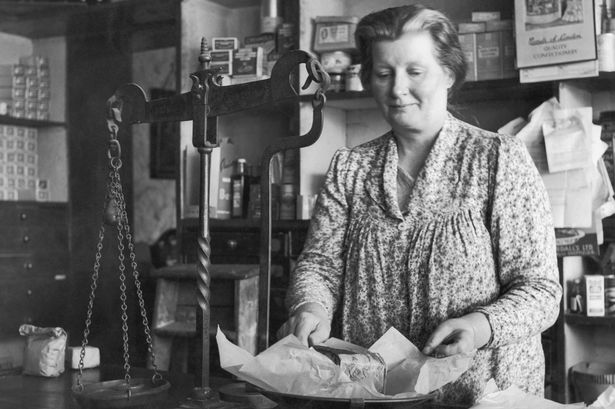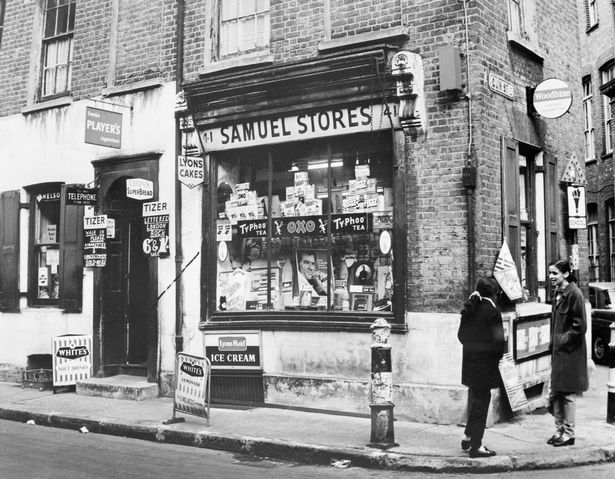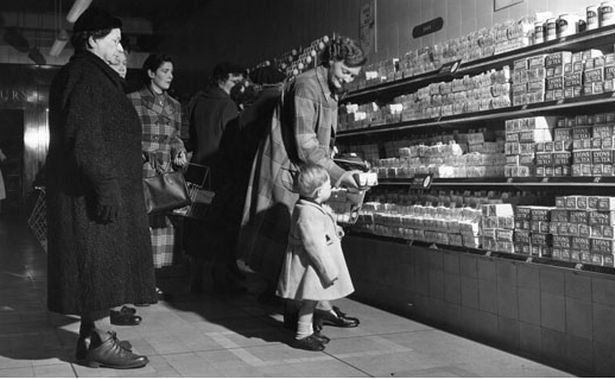BYNADA FARHOUD
9 JAN 2017
MIRROR UK
From high streets with butchers, bakers and grocers to corner shops and the birth of the mega-supermarket, things have changed drastically over the past 100 years – and are set move on even more quickly in the future.

Service in a general store back in 1950 (Photo: Picture Post)
For years they have had the big supermarket chains on their toes by offering bargains such as cut-price champagne.
But because of long queues at the tills, crowded car parks and understaffed stores, are Aldi and Lidl ’s bubbles about to be burst?
Clive Black, at stockbroker Shore Capital, said the discounters have become victims of their own success, with “overtrading” leaving stores looking “as if they’ve been robbed by a load of schoolkids”.
Aldi said the claims “bear no relation to reality” and that sales over Christmas were 15% higher than last year. While Lidl has plans to open a dozen more upmarket stores – part of a £1.5billion plan to mimic Waitrose.
From high streets with numerous butchers, bakers and grocers to all-in-one corner shops and the birth of the mega-supermarket, things have changed drastically over the past 100 years.
Here’s a look at how shops and shopping have been transformed – and a peek into the future.
Corner shop: 1900

(Photo: Hulton Archive)
Samuel Stores in East London sold a wide variety of goods
A century ago many streets had a corner shop that sold an array of groceries and household goods.
Shopkeepers prided themselves on knowing all their customers by name.
Stock was kept behind the counter. The goods were weighed out by hand, cut up, sliced and wrapped – and there was usually time for a chinwag with the staff and anyone else in the queue.
These general stores were the backbone of the community at the outbreak of the Second World War in 1939 as many mothers left to run their household could not travel far without transport.
Self service: 1950

(Photo: Internet Unknown)
Sainsbury’s in Croydon, Surrey, started the phenomenon
Sainsbury’s launched the first self-service store – where customers collected their own groceries in baskets, rather than relying on assistants standing behind counters – in Croydon, Surrey, in 1950.
The format soon spread to high streets across the country. A year later 28-year-old businessman Patrick Galvani opened Premier Supermarket in Streatham, South London.
It was the first to qualify as a supermarket, not only because it was self-service but thanks to it having a floor space of more than 2,500sq ft.
Creating a shopping phenomenon, before the end of the store’s opening day, 1,500 people — many of them used to years of rationing — had passed through its doors.
After decades of queuing patiently behind counters at their local corner shop, many customers enjoyed the freedom of serving themselves, grabbing what they wanted before paying at one of the three tills.
The launch was so successful that within 14 years Express Dairies – the company behind Premier – had opened a further 39 stores and had been eagerly followed by major competitors including Tesco.
READ MORE
Get Joe Wicks’ chart-topping Lean in 15 book for FREE – and your dream body
Out of town: 1964
Read more
Subscribe to our free mailing list and always be the first to receive the latest news and updates.
